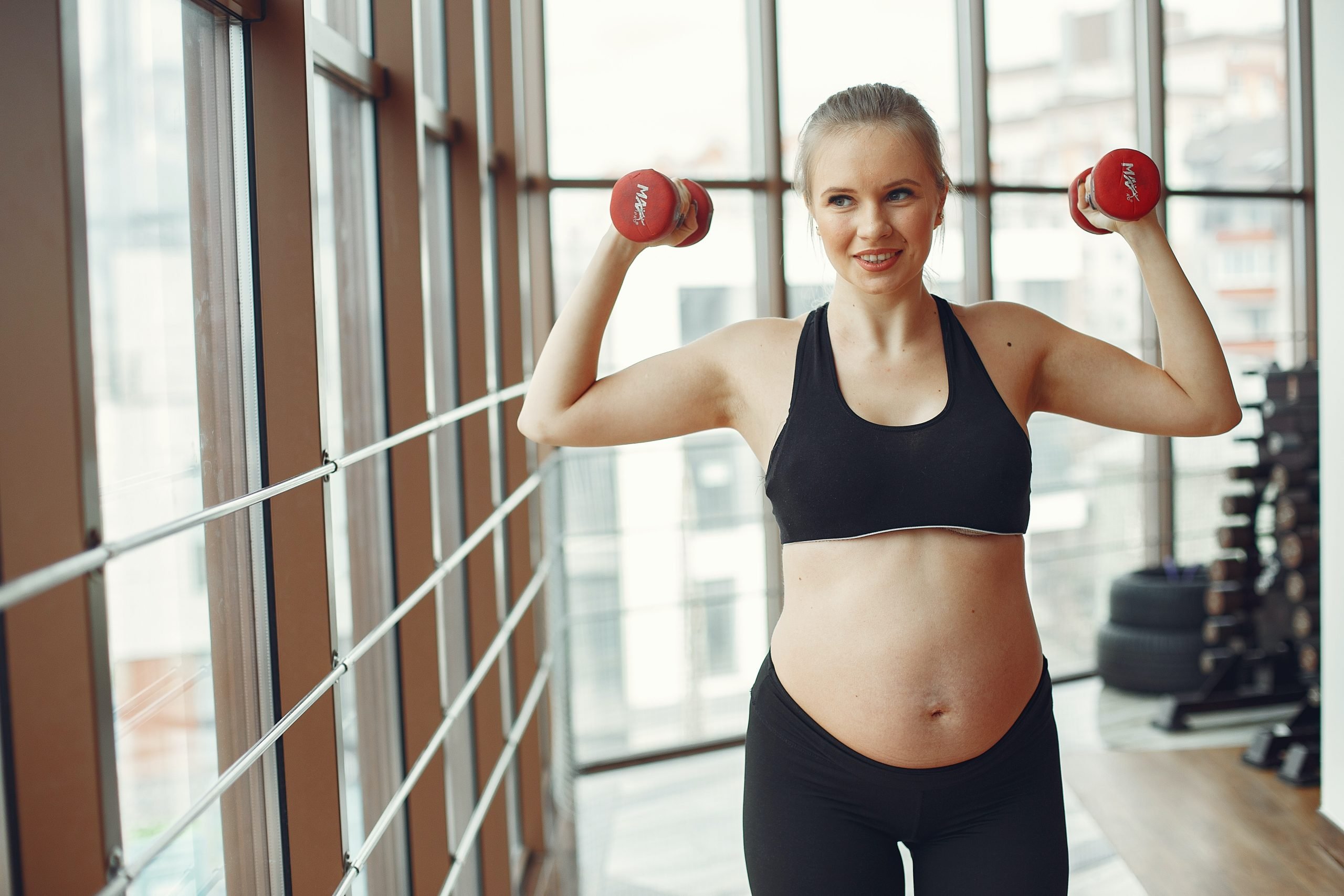At RWF, we’ve trained around a dozen women at various stages of pregnancy, and ‘recovering’ from pregnancy.
This post isn’t intended to be an exact how-to guide. There are a myriad of things to consider in training whilst pre- and post-pregnancy, and whilst the medical profession rarely understands what strength training actually is, it’s probably worth listening to your doctors more than your PT at this stage – if for no other reason than for your stress levels and peace of mind.
Let’s just say though, that even in pregnancy, you are not a delicate little flower that must be wrapped in cotton wool. You are capable of exercise – some to quite a high level –and we hope to extol some of the benefits of doing so.
There’s a big caveat. Pregnancy brings on a lot of hormonal and physical changes. For that reason, it’s generally unwise to suddenly start doing something you’ve never done before. Never weight trained? It’s probably not a good time to start learning how to deadlift or squat with an Olympic bar. The main reason for this is because of the additional stress, mentally and physically, this would place on a body already undergoing major changes. You won’t know whether an ache, or a pain, is due to training, or due to the pregnancy. It’s simply not worth the worry for most women.
However, if you’re already active, or you already train, then there is NO reason not to continue unless you get diagnosed with a condition that specifically prevents it.
The trick to exercising when pregnant is to manage expectations. It’s unlikely that you’ll be getting much stronger and fitter, as the body changes priorities way too much for that, but there’s no reason you can’t maintain your existing fitness and strength levels. You can continue to get the anti-stress benefits, which are probably even more needed at this point!
When someone is pregnant, changes happen to the cardiovascular (CV) system and the blood supply which make the way you exercise have to change. For example, blood vessels dilate in the first couple of months in anticipation of a 40% increase in blood supply – so blood pressure drops until the blood supply increases to fill those veins (it’s called vascular underfill) – meaning most women will feel light-headed and dizzy for a short while.
Similarly, hormones in the body change and the brain becomes much more sensitive to CO2, again, which can cause light-headedness.
Another change is the release of a hormone called ‘relaxin’ which starts being secreted about half way through the pregnancy; it loosens all the ligaments in the body in preparation for the birth – which can increase the chances of injury to joints. It simply means you have to be more careful with certain movements, particularly weight bearing ones. If you have a joint that you normally have to be careful with – a dodgy knee or elbow, maybe – then consider wearing a support to help with stabilising that joint.
The benefits of exercising during pregnancy, especially exercise that gets you out of breath, are almost limitless – even down to making the labour easier and shorter, and improving the health and possibly the cognitive function of the baby. If you think about it logically, CV increases the oxygen level in the blood, which increases oxygen delivery to tissue. In pregnancy the body prioritises blood flow to the baby and the heart, NOT the working muscles – meaning that while CV and weight training will seem harder for you than before, the majority of the benefits pretty much go straight to the baby.
You really need to incorporate some pelvic floor work in.
You should avoid any kind of crunches or abdominal work involving spinal flexion in the latter stages of the pregnancy. The rectus abs do actually completely seperate in the later stages of pregnancy, and working them during it can have a long-term detrimental effect on getting them back in shape.
In the first three months, there’s no problem at all doing squats with your normal loads. Deadlifting again is fine, as is bench pressing. You need to avoid too much work that strains the core area though, in the latter stages. This means that after the halfway point I would lean towards incorporating higher rep, lower weight work to get all the CV benefits I’ve talked about, but without the risk that higher weights could bring.
A longer warm up is necessary too, as the body isn’t really interested in making the muscles flexible and the joints well-oiled at first, so your normal 5 minutes warm up won’t work…it’ll need to be nearer 10-15 minutes, and may feel far harder to get the lungs ‘going’ than normal.
If you run at all, there should be no problem to keep running – as long as you bear in mind the joint issues already highlighted. There are no issues with the impacts of jogging on the baby itself; it’s well protected. You can buy ‘slings’ that can help support the bump if running is uncomfortable.
This, as said earlier, is by no means a comprehensive article about training while pregnant but it should at least give some ideas of where to research further, and maybe allay a couple of fears about making yourself sofa-ridden for the next nine months!


